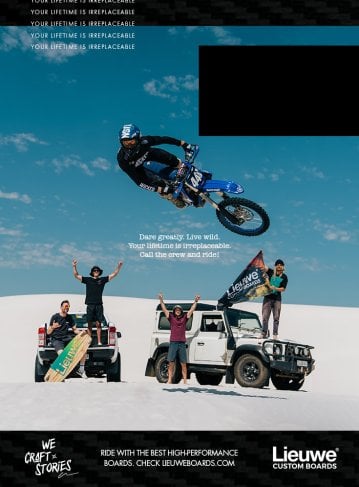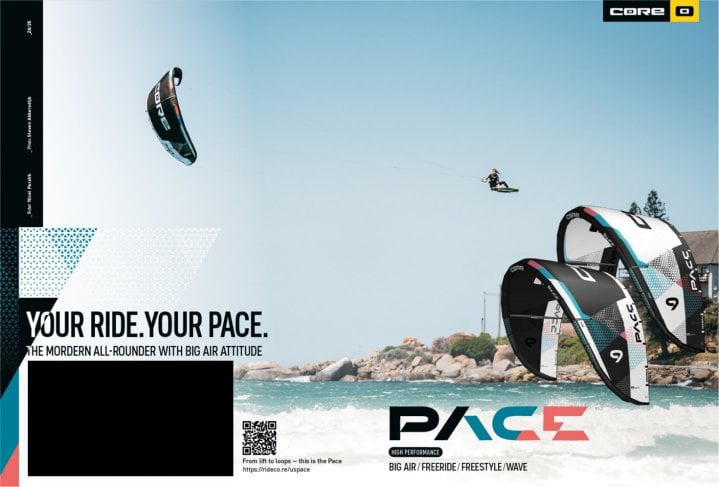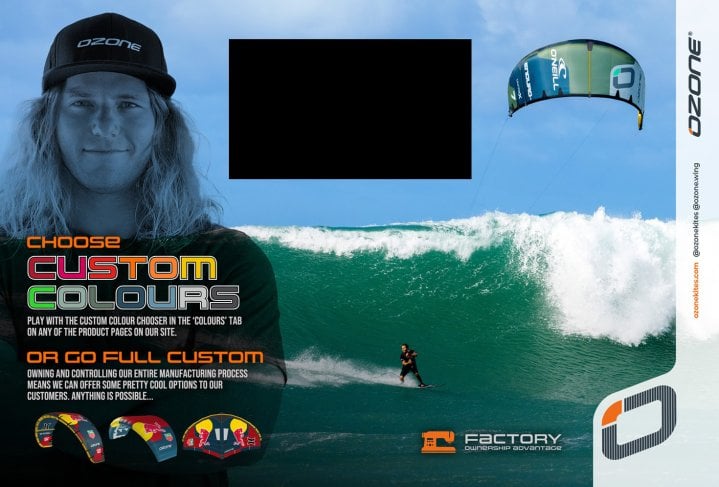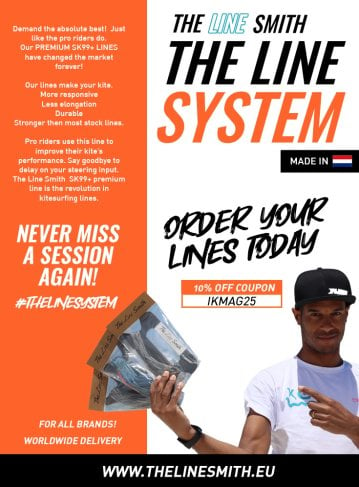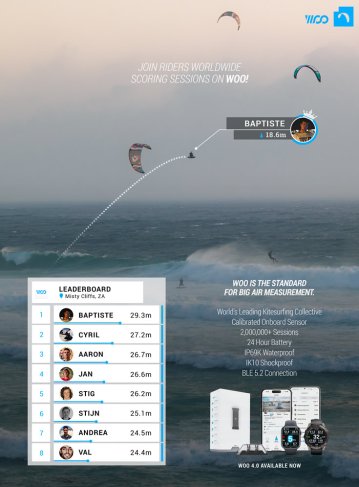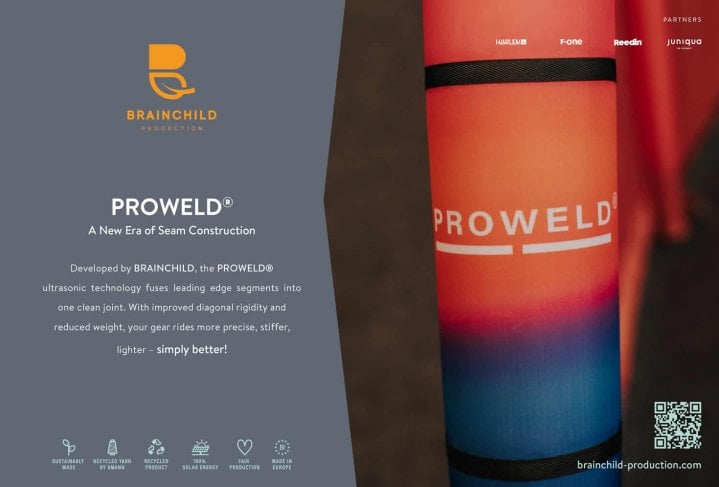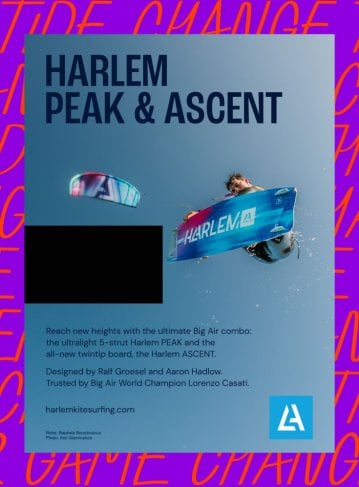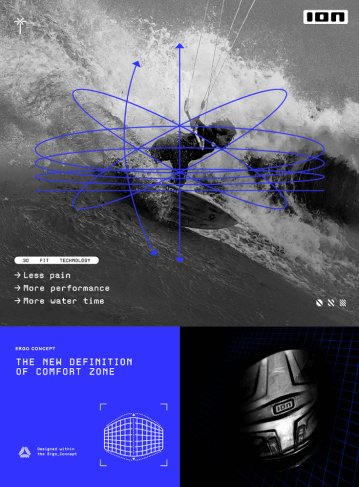
Tech Focus: Harlem Kitesurfing PEAK + ASCENT
Issue 111 / Wed 25th Jun, 2025
Jen Tyler chats with Aaron Hadlow about Harlem’s newest releases the PEAK kite and ASCENT twin tip. Built in collaboration with Ralf Grösel, the gear blends performance, comfort, and sustainability. Aaron shares what sets these designs apart and why they’re built to help riders push their limits. Read all about it here!
Hi Aaron, We can’t wait to hear about Harlem’s latest releases! How did the collaboration between Ralf Grösel and you influence the development process?
We have been working together for over 10 years now, and we have a common understanding of our vision for kiteboarding products. I have always looked to gain an advantage with the best possible performing products, but I also realise that this needs to be commercial and that the consumer can also take advantage of that.
What about the relationship makes it so successful?
We are able to feel the kite in the same way, so it is a great validation and gives us a lot of confidence in what is being produced. We are very precise and know that this translates to the final product.
As I mentioned, we share the same ideas and believe that our approach to products and riding style is the most beneficial for all riders looking to push their limits and/or simply have an easy and comfortable ride.
Let’s start with the all-new PEAK! What were the design goals when you started the project?
After the THRIVE, which is a 3-strut, fixed bridle, super friendly, all-round kite (which you can also extract performance), we wanted to work on a different style of kite that is more suited to jumping high and hang time. We always first and foremost put commercial properties as a priority, so comfortable bar pressure, easy handling, good de-power, etc, but mainly we focused on a kite that would be super easy to jump high with precise handling and ‘sheet and go’ (producing lots of power/lift when sheeting in).
How does the kite differ from the THRIVE and FORCE?
The FORCE has amazing speed and looping capabilities. The Thrive is a 3-strut, all-round kite made for every level of rider, every discipline, and every condition. The PEAK is a 5-strut big air kite made for jumping high and breaking records.
Regarding feeling, the THRIVE and the PEAK differ in steering and de-power stroke type. The pressures are similar, but delivered in a different way. The steering is still direct, but produces a wider arc, meaning the delivery of the power (and kite loop) is more consistent. The kite still has lots of de-power, but the limited pulley system makes you feel more connected to the back lines, especially in stronger winds. Being a 5-strut frame, the frame is stiffer and the PEAK has a higher top end, so you can hold and control more power in strong wind.
How beginner-friendly is it for someone new to big air?
I believe it works great. It is very intuitive, goes upwind with ease, and sits very high into the wind. This allows the kite to really find its position in the wind window during take-off, and with the right timing, it gives you a really vertical take-off and solid connection to the kite, in turn giving you the most control. Again, the kite has great de-power and handling abilities, so I expect this kite to work really well for many levels of riders.
How does the PEAK handle super gusty or stormy conditions?
We wanted this kite to perform at the highest level, meaning the better the rider, the more you can extract from this kite. This kite sits so far into the wind window and can give a huge amount of vertical lift. We designed the kite to give our team riders the most confidence possible, allowing us to push our limits even further. It has a great second lift upon landing, so the combination with the board makes for a smooth landing.
What materials or parts help make it more sustainable?
This topic is a part of the company values, really trying to find better solutions, if possible and viable. Of course, we work on optimising the packaging and logistics processes, but when it comes to kite production, there are a couple of factors. Our full kite (and wing) line-up is produced at Brainchild production, which operates on solar energy. European raw materials suppliers are prioritised, drastically reducing transport distances and carbon emissions. Our kitebag is made of 97% recyclable and recycled materials. All kites are also digitally printed, meaning all the material that enters the factory is white, which saves a lot in waste material but also saves a lot in the colouring process, as the process to dye the material into a solid colour is very energy-consuming.
Tell us about the ASCENT. You’ve been designing twin tips for a long time. What makes it different from other twin tips?
I have always loved board design. I remember being fascinated by it since I first started kiteboarding. Over the years, I worked with shapers and designers and gained a great understanding.
It was really exciting to have the chance to produce a board from scratch to suit our kites and see what is possible in design. I have a strong philosophy about how a board should work and feel, which is echoed by Ralf. The channels and concave are pretty unique, but I would just say the precision and all the parameters (rocker, flex, outline, etc.) are what set it apart.
What kind of rider is it designed for?
Our range has two boards: The LAUNCH is a more flexible and forgiving board with quick planning and a comfortable ride. We wanted to maintain speed and comfort, but achieved that in a different way due to the concave and channels. Having a quick board is key to getting the most out of our kites, so this was important, but we were able to make a more stable platform and add more rocker so that it could be pushed harder and ridden more powered. Intermediate to advanced riders will be perfectly suited to this board.
How does it fit in with a big air rider’s quiver, and what size would you recommend?
I am 180cm and 75kg. Both sizes work for me. I would say I am right in the middle of the two. I would take the 135 in more extreme conditions, although for most sessions, I am riding the 138. I am used to a bigger board from freestyle, so that works for me.
It really depends on your riding style, weight and height, but we would generally recommend the 135 for riders up to 70kg and the 138 for riders over 60kg.
Why did you blend carbon and glass in the board, not just full carbon?
We had free rein to make this board however we thought best. We tried many different constructions, including full carbon. We just wanted to make the best board possible.
In the end, we came up with a blend of glass and two carbon weaves. We were really looking to make a specific flex pattern from tip to centre. They should be super solid between your straps to reduce reverse flex for a solid land. Then, having a bit more forgiveness on the tips to help load and carve into the wind upon takeoff. Speed, height, grip, and control are key for us to suit our kites, so we implemented this in production.
What’s the benefit of the soft-flex tips on this board?
In general, it adds comfort to the ride in harsh condition, I also feel it allows you to sink the tail of the board and really have a consistent and grippy carve, this gives you great confidence through take off allowing you to jump into the wind and get a really vertical and connected take off. Upon landing, it is also more controllable, sometimes stiff carbon, fast rebound tips can buck you off balance, so again, it is just about the ease of use.
What have you done in the shape to make those harsh big air landings easier?
One point that stands out the most is the comfort of landing on this board. We were aiming for this, but it also exceeded our expectations. The channel and concave configuration, in combination with the flex pattern, are definitely the main contributing factors. As I always say, there are so many factors in getting a board right, and I am really happy to release and share this one.
What would you say to a rider thinking of upgrading their twin tip?
I would say that boards are really personal. Many people have a different style and preferences. It is definitely interesting to demo and try friends’ boards wherever possible. Definitely give whatever you try a good go. Really think about the things you like and dislike and why.
So far, the feedback on the Ascent has been really positive. People have felt comfortable and confident about it straight away, which is a really good sign for me.
If you have the chance to try the board, give it a go. There’s not much to say; I know the board will speak for itself.
Great, thank you, Aaron!
Thanks Jen!
Videos
By IKSURFMAG


